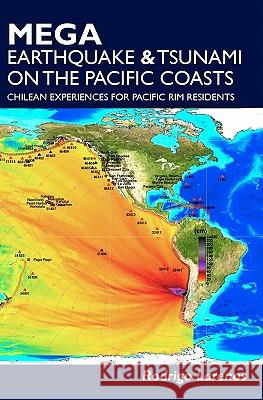Mega Earthquake & tsunami on the Pacific coasts: Chilean experiences for Pacific Rim residents » książka
Mega Earthquake & tsunami on the Pacific coasts: Chilean experiences for Pacific Rim residents
ISBN-13: 9781451596038 / Angielski / Miękka / 2010 / 92 str.
Mega Earthquake & tsunami on the Pacific coasts: Chilean experiences for Pacific Rim residents
ISBN-13: 9781451596038 / Angielski / Miękka / 2010 / 92 str.
(netto: 57,61 VAT: 5%)
Najniższa cena z 30 dni: 60,15
ok. 16-18 dni roboczych
Bez gwarancji dostawy przed świętami
Darmowa dostawa!
The mega-earthquake occurred on February 27 of March 2010, along the coast of the central Chile in South America, produced an early and shacked weak up to millions of people. The 8.8 Richter scale event hit the central zone at 03:34 A.M. while people were sleeping. Then, as if the damage weren't enough and still at dark, it was followed by a not only devastating but also lethal tsunami that was strong enough to travel across the Pacific Ocean, hitting Asia only fourteen hours after. This earthquake is the fifth more intense ever measured and it was so strong that Scientific American published in the March 4th newsletter the following article: "The magnitude 8.8 earthquake that jolted Chile on Saturday was felt as far away as Sao Paulo. But NASA scientists are proposing that its repercussions are truly global in a geophysical sense: it likely shifted Earth's axis by about eight centimeters." But unfortunately the tragedy didn't stop with the earthquake. It also originated a tsunami that hit the coast with 4 waves, the first arriving just a few minutes after the earthquake and the last, several hours after. This tsunami was so strong that it has been detected that at least one wave was 30 meters or 98 feet high. Before continuing I would like to prevent lecturers from falling into the temptation of thinking that this mega-nature-events, only happen in faraway lands affecting people quite different from us. The Indonesian Tsunami of December 2004 was very distant from Chile not only in miles but also in cultural terms. And now, it's clear that Indonesian experience helped to prevent more fatalities. That's why this book has been written to urge people living in the Pacific Rim, to take some time to analyze their situation, the one of each community and act in order to prevent or reduce potential damages and casualties."
Zawartość książki może nie spełniać oczekiwań – reklamacje nie obejmują treści, która mogła nie być redakcyjnie ani merytorycznie opracowana.











